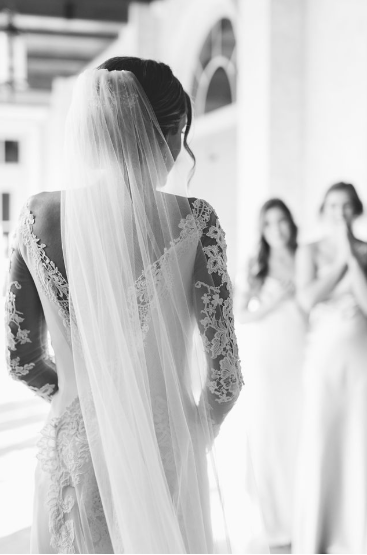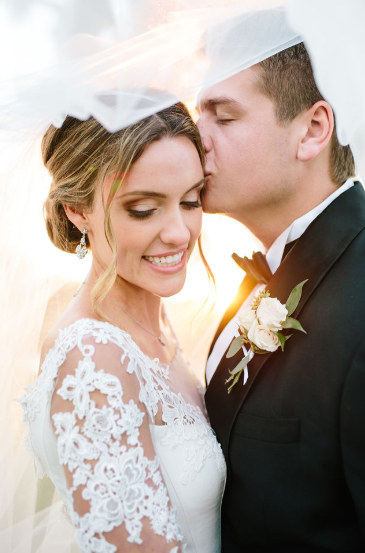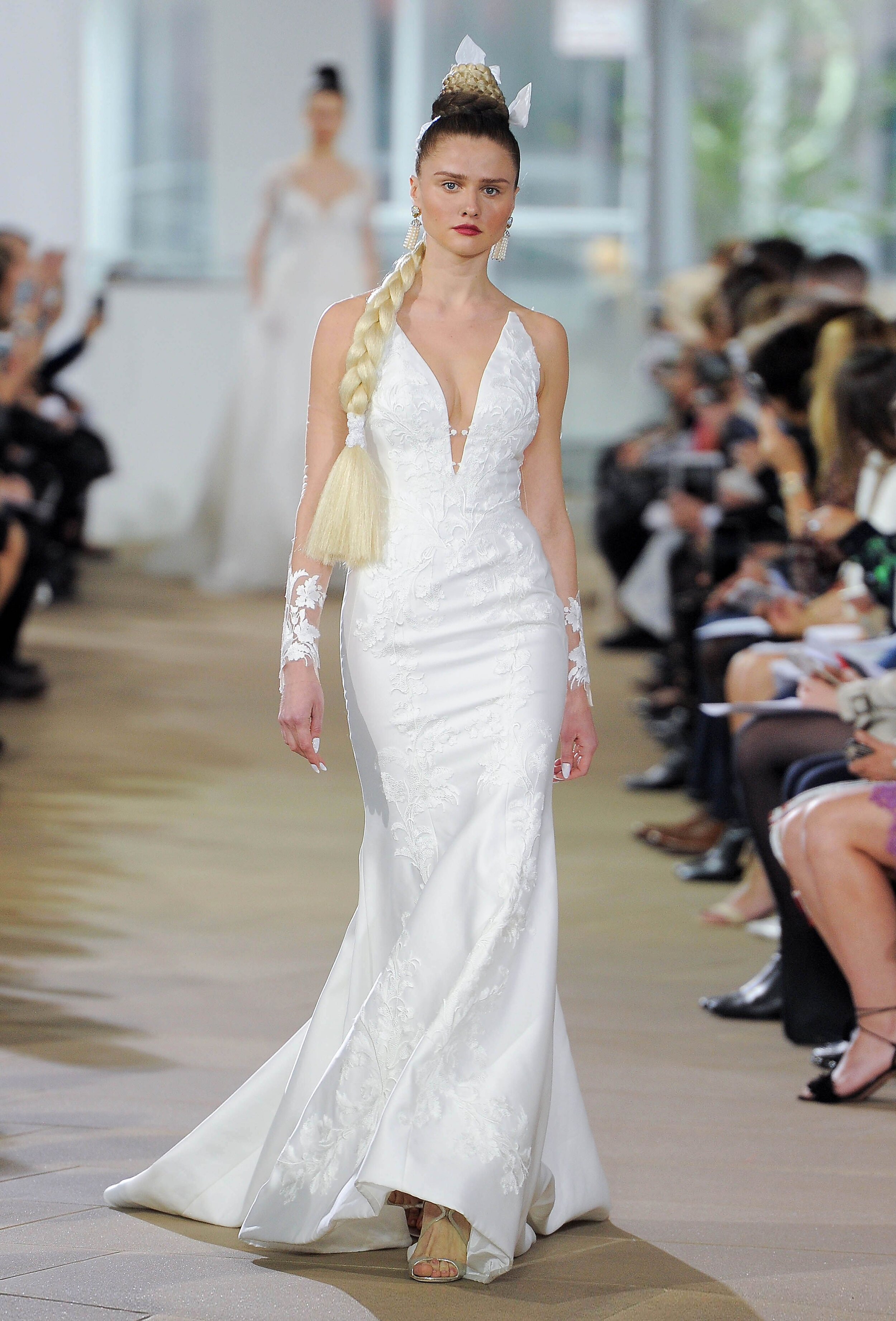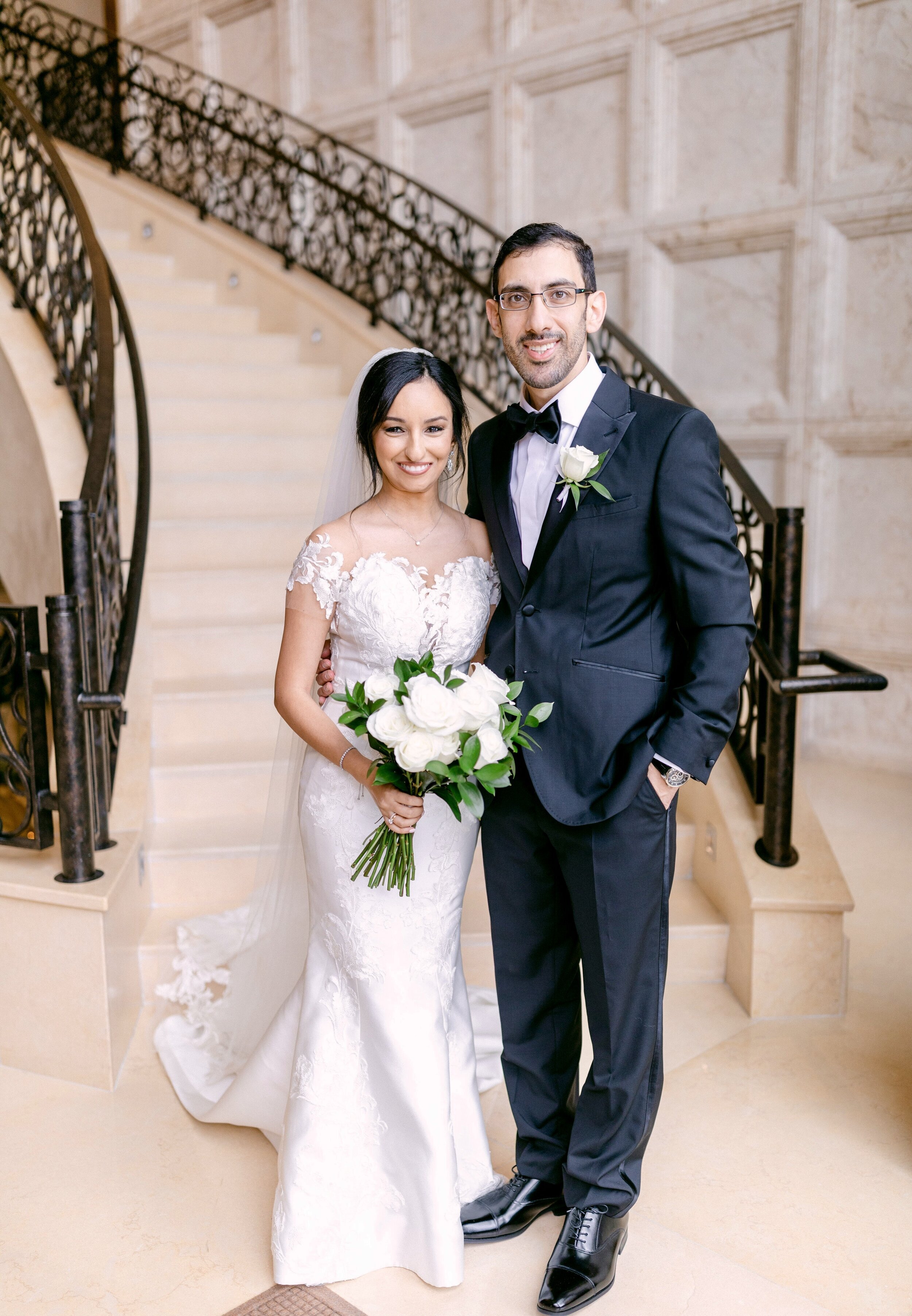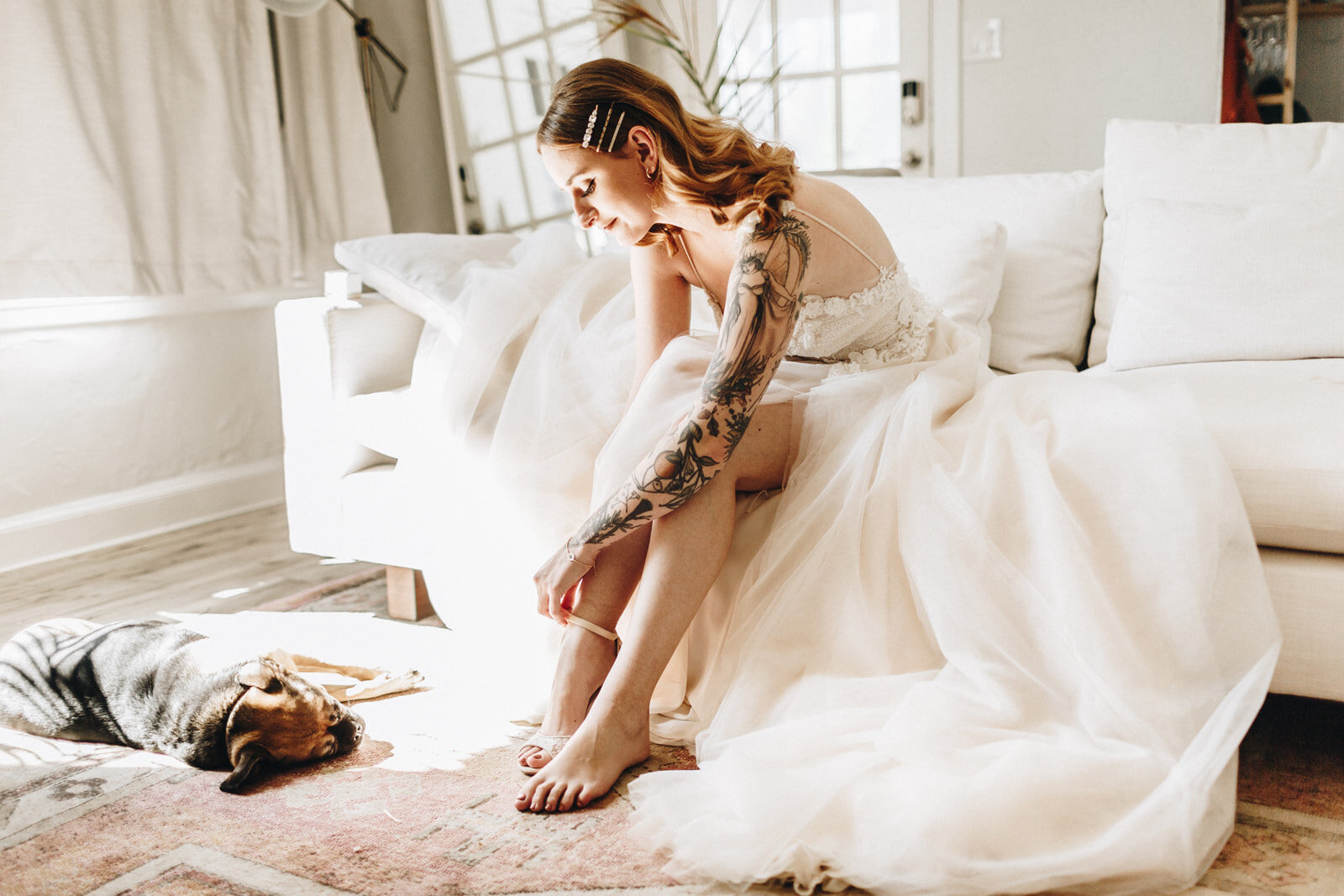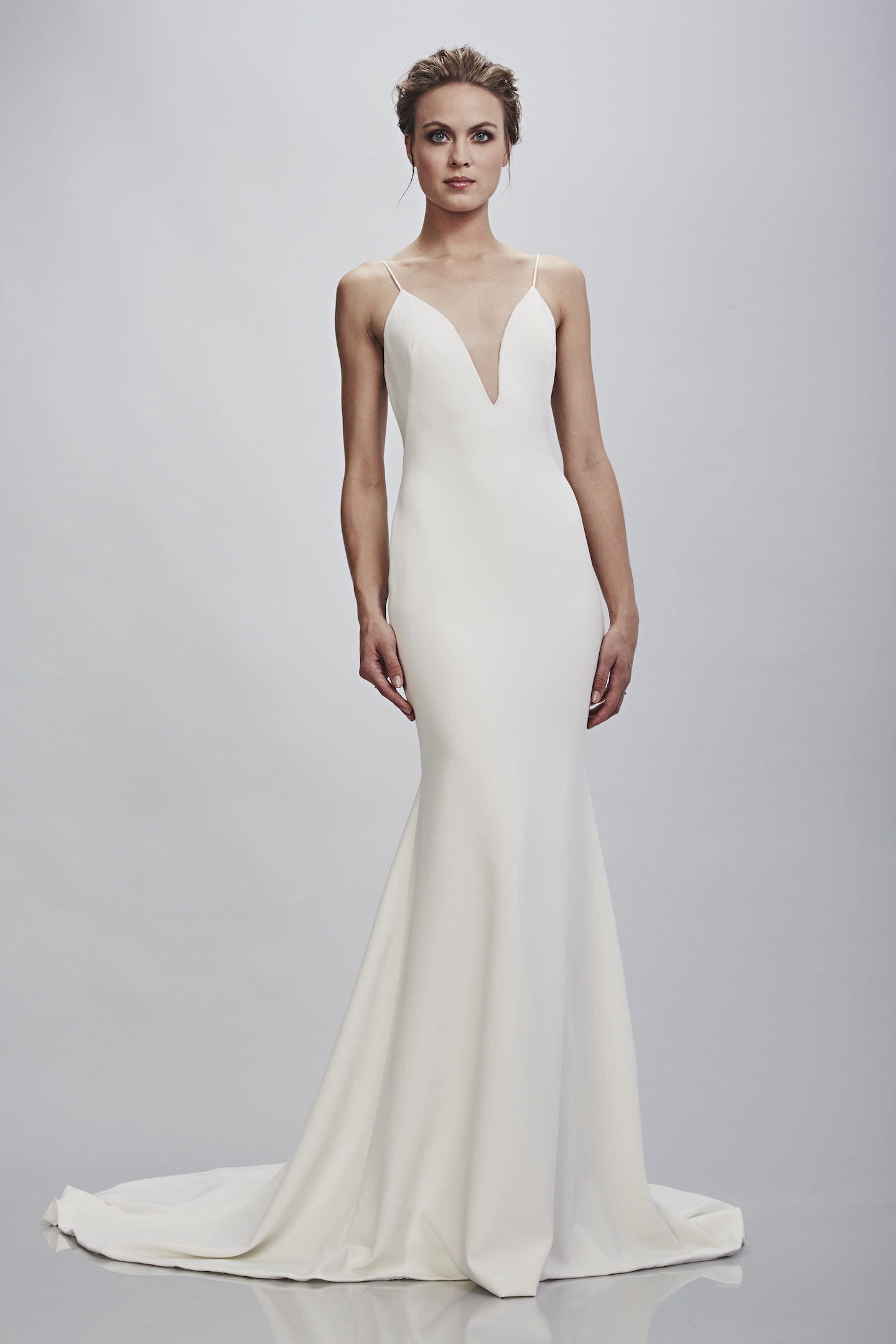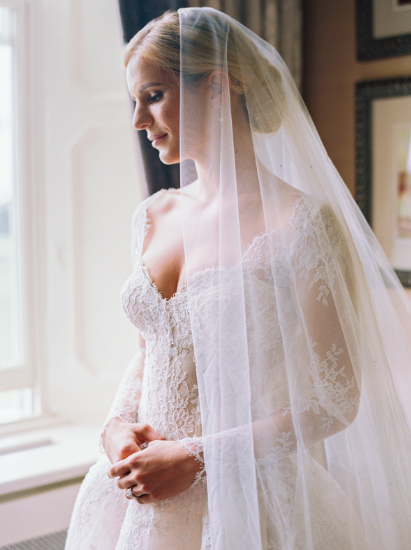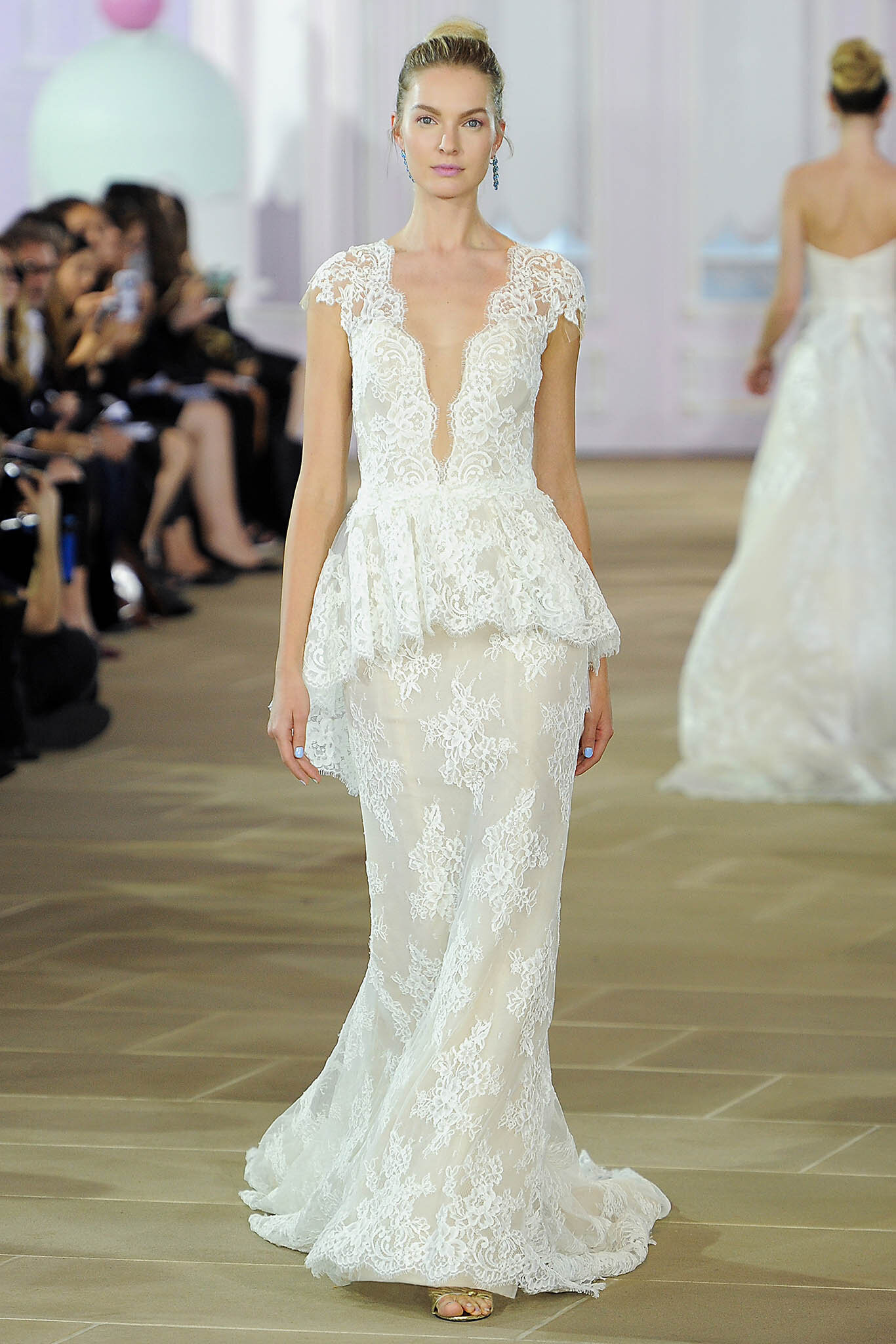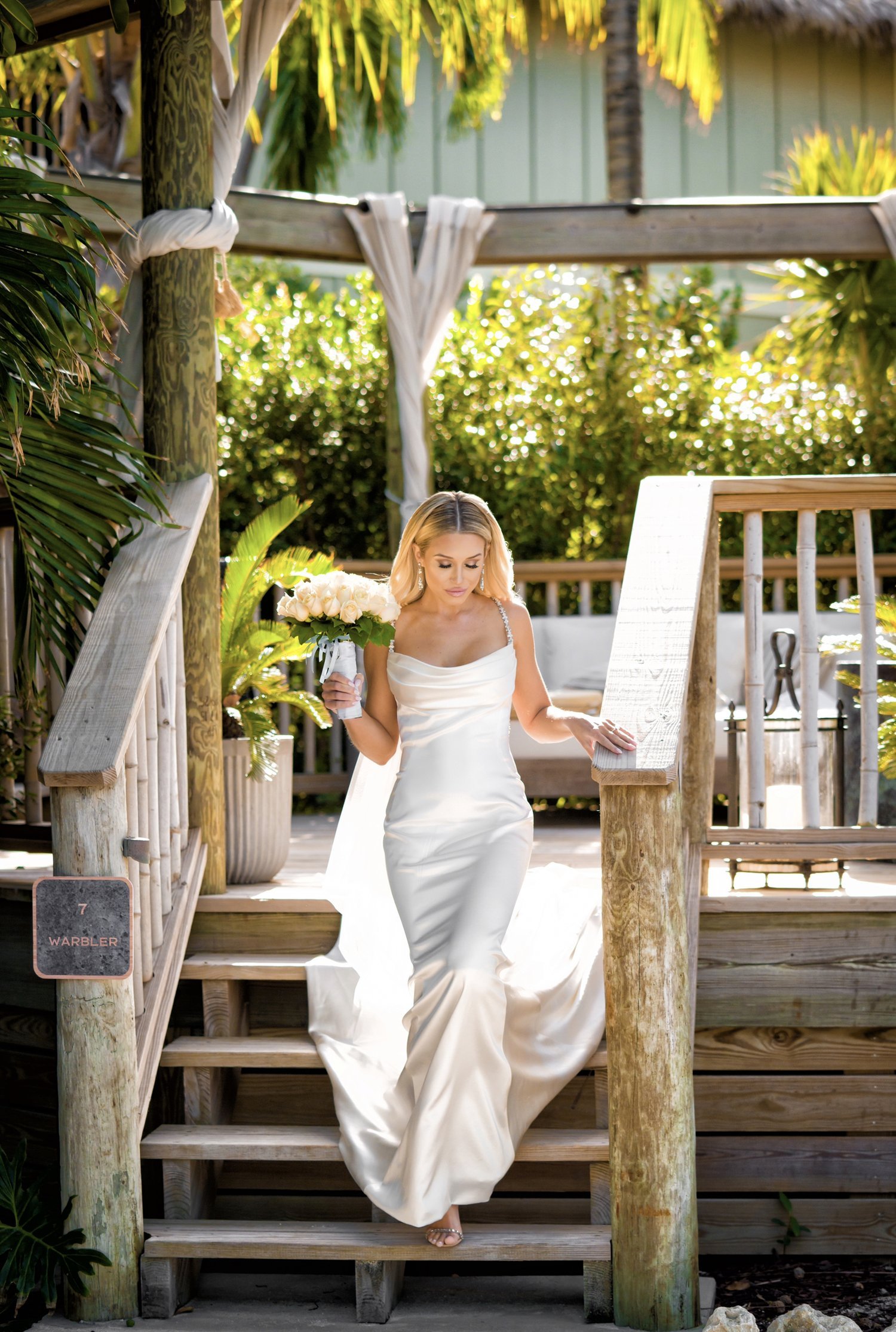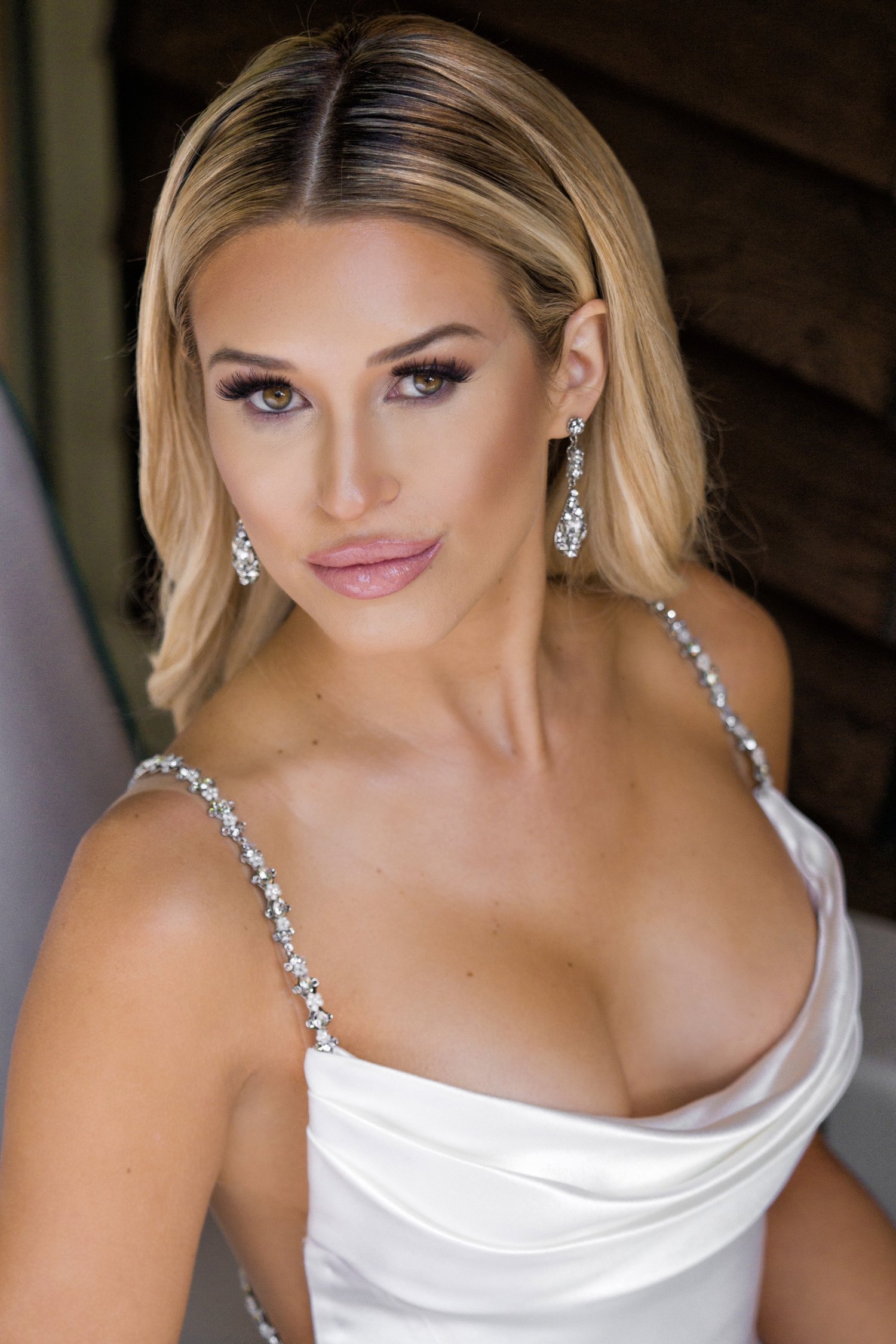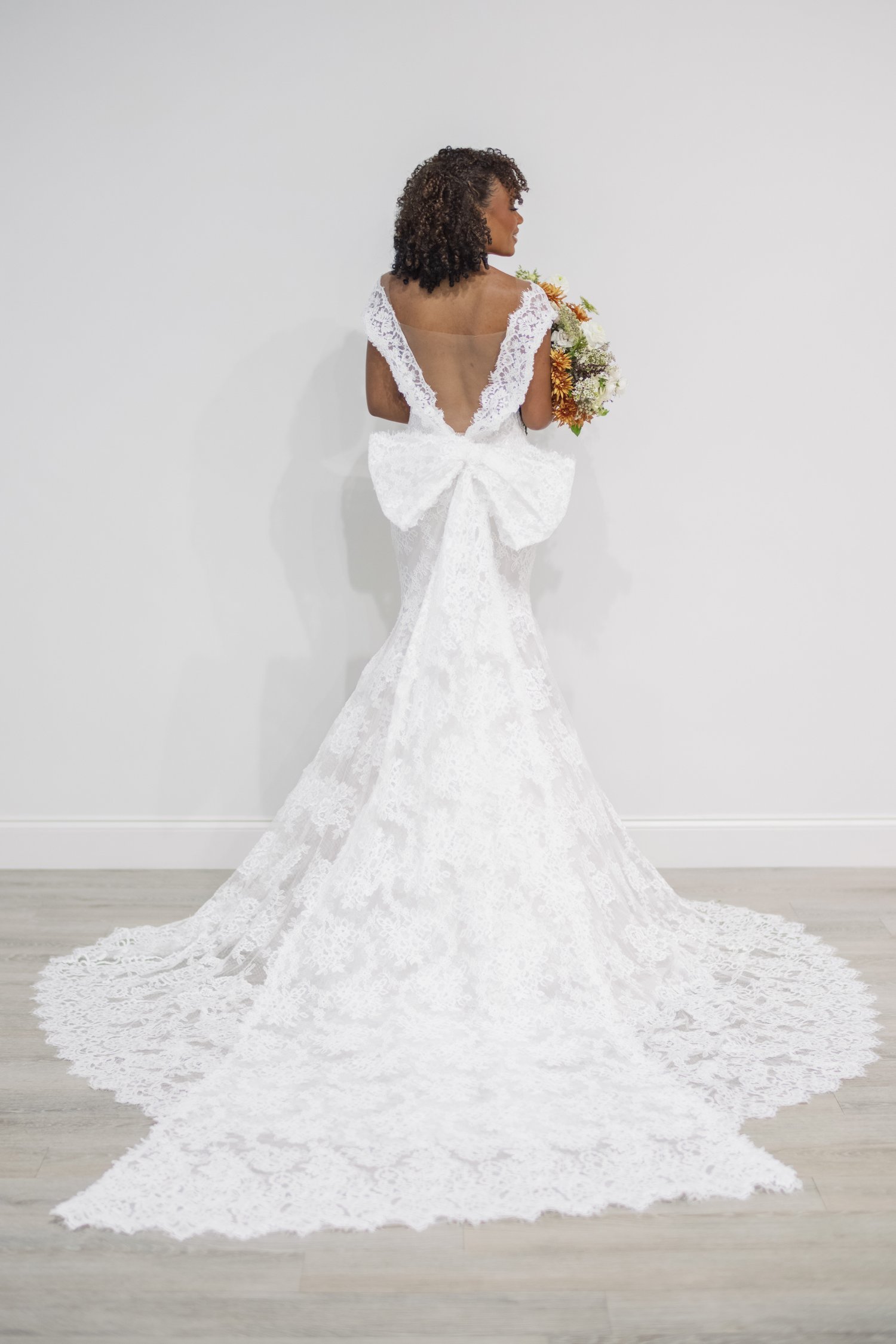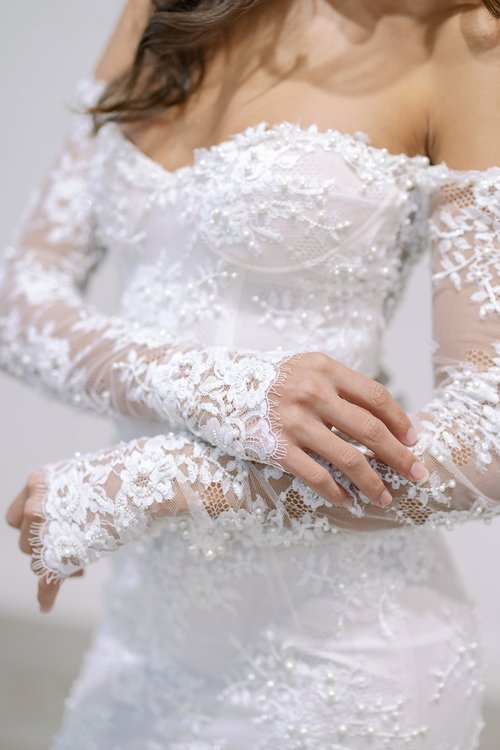A Bridal Stylist's Guide to Wedding Dress Alterations
Everything You Need to Know about Wedding Dress Alterations
Wedding dress alterations are equally as important as finding your dream wedding dress. The Bridal Finery is one of the few bridal boutiques in Central Florida who provides guidance on alterations and offer in-house alteration fittings. We have spent years working side-by-side with designers and wedding dress seamstresses. Here is my guide to everything you need to know about wedding dress alterations. Enjoy my insider tips and tricks to making sure you feel and look flawless on your wedding day!
xoxo Tali, Stylist and Co-Owner of The Bridal Finery
Download our free guide to alterations and wedding tips for your big day!
A Note About Alterations at The Bridal Finery
At our Orlando Bridal Shop we offer in house alterations through a separate company. We are present for every alteration appointment so you never have to worry about the process. At The Bridal Finery we believe that your dress should be the best representation of you and your style and sometimes that means customizations! Our seamstress is no stranger to our crazy requests and additions to dresses.
Throughout this guide we’ve provided just a few examples of the customizations we’ve done to Orlando wedding dresses, answers to questions you might have before starting your alterations process and provided lots of alteration inspiration at the bottom of this guide!
What are Wedding Dress Alterations?
Wedding dress alterations are the tailoring and adjusting of your wedding dress. During your fitting appointment, your seamstress will take your measurements, and pin the areas of your gown that need to be taken in. Without alterations, your designer wedding dress will fit loosely and not highlight your curves and figure.
Will Every Wedding Dress Need Alterations?
The answer is yes! Every dress will need alterations. When I was ordering my wedding dress my hips were falling into a size 8 and my bust was falling into a size 4 in the size chart. I didn’t want to squeeze my hips in to a size 4 and risk my dress not fitting or being uncomfortable to sit down. The safest option was ordering a size 8 and tailoring in the top. Plus, I’m only 5’5” so a hem and a bustle were necessary.
What are the most common Wedding Dress Alterations?
There are parts of the dress that should always be tailored to fit just right. Standard alterations include adjusting the bust, taking in the waist, and adjusting the hips. These three alterations help keep your gown staying up and in place. In addition to these three, a hem and bustle are also needed for the length of the gown and functionality of the train. Think of it like a tailored suit verse a rental suit. There is a big difference on the fit. These standard alterations will be key to making sure you feel the best in your wedding dress.
Ines Di Santo Audin runway dress at NYC Bridal Fashion Week.
Our bride Mariette wearing a personalized Ines Di Santo wedding dress. During her bridal appointment we discussed ways of providing her with more coverage and adding a capped sleeve detail. In addition to creating the sleeve details we created a custom veil with the same appliques. See more from Mariette’s wedding here. Photographer Nate Puhr / @natepuhr
Where should a wedding dress be hemmed?
Everyone has a different idea of what the perfect hem is. After all, this is truly what alterations are about. It’s about making sure you get to wear your wedding dress the way you wish to wear it! A great seamstress is one with a wealth of knowledge, but still knows to listen to the customer. My ideal hem is called “kissing the floor”. Our seamstress Sarah came up with this term to represent what the “perfect hem” is. Kissing the floor means the dress is just barely touching the ground. This prevents you from falling and tripping on your wedding dress.
Will my shoes show once my dress is hemmed?
This all depends on the silhouette of your wedding dress. If your dress is fitted or aline, when you step forward you will see the front portion of your shoe. When you are standing straight, you shouldn’t see your shoes. It’s when you step forward they peek out a little. We recommend the Bella Belle shoe brand for comfort and style.
Will my train be hemmed off when the seamstress hems my dress?
Unless you would like your train hemmed, there is no reason for the seamstress to remove any fabric from your train. When they tailor your dress, the shortest point will be at the front center. A little fabric will come off of the side of the dress to round off the front hem.
What if I change from a tall heel to a sneaker for my reception?
The sneaker trend is coming back hot. We totally get it. We are getting use to our comfortable flats. The challenge will be the hem. We recommend staying in the same heel height the whole day. You may decide to wear flats for the ceremony and reception or “beauty is pain” and wear your heels all day. Changing from a heel to a flat or sneaker will cause your dress to be long at the reception. It may not seem like a big deal now but a long front hem can be annoying and give you the feeling like you are constantly having to pick up your wedding dress. Changing from a flat to a heel, will do the opposite. This is a great idea if you have a choreographed first dance. Switching to a taller heel for the reception will allow you to dance easily; however, it will show your shoes.
How does a seamstress hem a dress with lace of beaded hem?
This all depends on the skill level of the seamstress. The seamstresses we work with are beaders. They know how to lift beading and lace trim on the bottom of a dress. Once the beading and lace is lifted, the seamstress hems the dress and placed the fabric back down. This is one of the most labor intensive parts of altering a wedding dress. Just about every wedding dress can be hemmed. It is important for your bridal stylist to communicate to you how your wedding dress is hemmed and if any detailing will be lost.
When Should I Start My Alterations?
Alteration timelines vary from bride to bride. If you are loosing weight or gaining muscle mass through wedding planning, you will start alterations closer to your wedding date than a bride who keeps a stable weight and body mass. Standard alterations start at about 8 weeks before your wedding; however, seamstresses can work with less than 8 weeks. At The Bridal Finery we check in and remind our clients to book their alterations appointment. When it gets closer to the wedding, there is so much going on. It’s best to book the first alterations appointment so you can block the time off of your schedule.
How Many Fittings are needed for a wedding dress?
Every dress is different and comes with its own set of alteration needs. On average 3-4 fittings are needed. The first fitting is to review what needs to be tailored and modified. The second fitting is to adjust the bodice a little more and start working on the them. The third fitting is to finalize everything. The fourth fitting is to try the dress on one last time and pick it up. Some seamstresses don’t need as many fittings; however, that can be risky business. It may mean they are rushing the work and trying to tailor as many dresses as possible instead of taking their time to alter it the right way.
Athena purchased an Inbal Dror dress from The Bridal Finery’s Orlando bridal store. During her bridal appointment we discussed changing the straps and adding a slit. Here is the end result on her wedding day! See more from Athena’ s wedding day here. Photo by Sydney Marie Photography
Is it okay to buy a wedding dress from a bridal store that doesn’t
have an in-house seamstress?
There are several shops that do not have an in-house seamstress option, it’s actually quite common. This is not something we believe in. We decided early on that we would always be available to help our clients with all their wedding dress questions before and after their purchase. Alterations are the “hard work” of bridal. When a bride purchases her wedding dress, we add detailed notes and photos in the file on the alterations plan. During the first fitting we review the notes and communicate them to the seamstress. If wedding dress alterations are a new world to you, it may feel overwhelming and possibly frustrating to take your dress to a new place and try to communicate what you need. Honesty we see it as an easy way out when a bridal shop doesn’t offer onsite alterations. Sorry, might seem a little harsh, but this is something we are passionate about. A pretty dress is only as pretty as the experience you receive from beginning to end!
What if I buy a wedding dress in FL and have it altered out of state?
Oh we got this! We have clients all over the country. After you purchase your wedding dress, we add the detailed alteration notes and create diagrams of any custom changes. We use our close network of designers and bridal shop owners to help you find the best seamstress in the area. We do a phone interview with them and provide them with photos of the changes. From there we follow up with you on our discoveries and help you set up your first fitting. If for any reason the seamstress is not the right fit, we help you find another or offer you the option of doing a 3 day turn around alteration with our recommended seamstress in Orlando. Because we are exposed to alterations every day, we are able to help you with your alterations from afar by providing you with advice. We are always happy to FaceTime during an alterations appointment as well.
Does the Bridal Shop or the Bride book the alteration appointments?
Every bridal shop operates their business differently. This is a great question to ask prior to purchasing your wedding dress. It would be a shame to have a beautiful wedding dress, but no knowledgeable seamstress to tailor it. At The Bridal Finery we have seamstresses we recommend. Sarah offers on-site fittings at The Bridal Finery. We have other seamstresses in Orlando area and throughout the country we recommend who offer fittings at their alterations shop. We help coordinate the first fitting and check in to make sure everything is going smoothly.
What is the Bridal Stylists Role in Alterations?
During the first fitting we pull up your photos from the day you purchased the dress. We share your expectations and concerns with the seamstress. We discuss any custom changes. From there we come up with a plan on altering the dress from beginning to end. The Bridal Stylist is there to help make sure the alterations run smoothly. We are like your wedding planners for the dress! Our seamstress calls us her second pair of eyes. We do a full 360 of the dress and point out any additional adjustments that are needed.
Crepe wedding dress by Theia Couture. This shows the dress on the runway prior to the bride owning it.
Jessie on her wedding day wearing The Theia Couture crepe wedding dress. With the help of Bridal Stylist, Tali, the seamstress added a personalized bodice. We added lace details to the neckline, waisting, and train. Photos by Jesse Walsh/DreamTown CO @jessew
What type of custom changes are possible?
A good bridal seamstress can do just about anything to a wedding dress. The Bridal Stylist and Seamstress will work together to discuss the changes. First the bodice is altered and then the custom changes start. The most common personalization changes we see are altering the neckline, adding sleeves, changing the size of the dress, and adding beading.
Altering the Neckline
If you are desiring a lower-plunging neckline, or you want to raise a neckline for fit purpose, these changes are considered a custom change, however, they are very common. Neckline depth on wedding gowns is a personal choice. While some women like having a sexy plunged neckline, others like a conservative higher neckline. Having a soft mesh at the neckline or backline is very helpful to provide you with a sexy look while still maintaining support for the bust.
Shannon wore her dress three different ways on her wedding day. For the ceremony she wore long lace sleeves followed by a capped sleeve for portraits. During the reception she wore the dress strapless. See more of Shannon’s wedding day photos here. Photography Perry Vaile Photography @perryvaile
Adding Lace Sleeves
One of the most popular trends right now is adding lace sleeves to a wedding dress. Lace sleeved wedding dresses can be hard to find. During your bridal appointment we will show you ways we can add a lace sleeve to your wedding dress. We have unattached sleeves we can pin onto any dress. During alterations, the seamstress will adjust the bodice first and then she will the lace or beaded appliqué to the sleeve.
Creating a Low Backline Wedding Dress
Most backlines can be lowered. We are very honest with sharing our opinion on how low is too low. Sometimes if a backline is too low it won’t pull in the waist and support the back. That is where mesh comes in. Mesh gets a very bad rap because some wedding dress manufacturers do not use quality mesh. Our designers use a soft, silky mesh that doesn’t scratch the skin. We skin match the mesh for you so you cannot tell there is mesh on the dress. It literally doesn’t look like it’s there. The value of having the mesh is for support.
If you are “C” cup or fuller, we recommend not having the backline go lower than your waistline. The dress may need a little extra support so dropping the backline really low is a risk. The seamstress can look into adding boning on the side, but mesh may be recommended.
Who should attend the alteration fittings?
We recommend coming solo or brining one trusted friend with you. The alteration fittings take 30-45 minutes each. It’s more the technical side of bridal and less about the celebration. Alteration fittings focus on achieving the best for your wedding day. Sometimes bringing someone new in who hasn’t been involved from day one can add a lot of confusion. Also, we all like to wear things differently. Your friend may where their clothes tighter than you do. It’s your time to communicate how you would like the dress to fit.
Ines Di Santo Violet wedding dress shown on the runway at NYC Bridal Fashion Week
Elena is wearing a fully lace fitted wedding dress to her New Orleans Wedding. During alterations we added the lace to the neckline to provide coverage and created an off the shoulder concept. See more from Elena’s wedding here. Photographer Monsoleil Weddings
What if I want to completely alter the way a part of my dress looks?
Go for it, girl! One of our favorite custom changes was to a dress we added Maria Elena beading for straps! It was a TBF crossover dream between the perfect Ines Di Santo gown and gorgeous Maria Elena handcrafted Swarovski beading.
Our Bride Chelsea looks gorgeous in her custom Ines Di Santo wedding gown at her Key West Wedding. During alterations we added beaded Swarovski Maria Elena straps.
Read more about Chelsea’s Key West Wedding!
Have wedding dress questions? Email me at Tali@TheBridalFinery.net
Read our other Bridal Fashion Guides for Alterations Inspo
Ready to find your wedding dress? Book your bridal appointment, here!
Receive a Free 15 min. Virtual Bridal Styling Appointment.
Fill out the form below and we will reach out to you within the next 24 hours.


